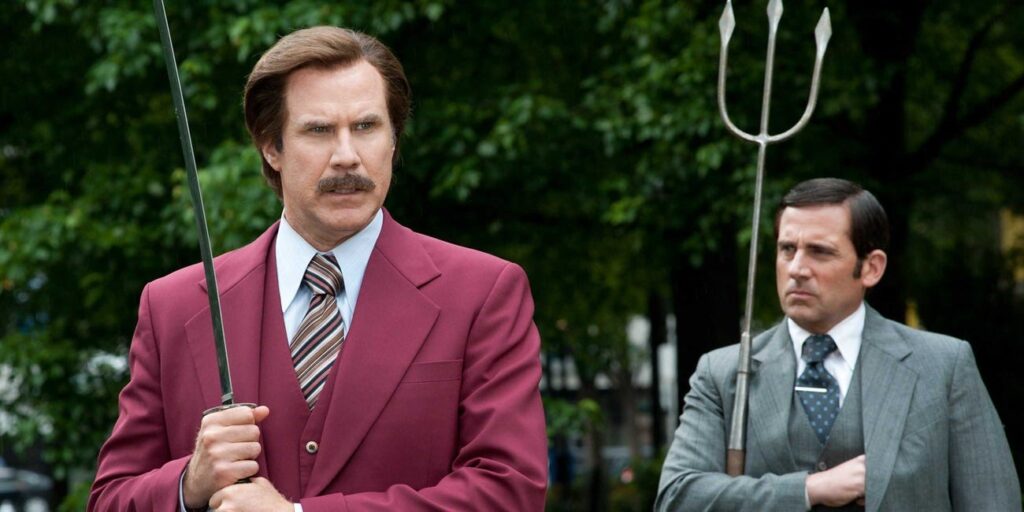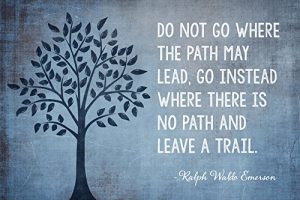This week’s blog post is dedicated to an activity I embarked on last week, the process of rewriting a teaching philosophy. Due to self-reflection, professional development, and a re-examination of motivations, I rewrote my teaching philosophy. The process I went through in writing my philosophy has been eye-opening for me and might be helpful for some of the 6×6 blog readers.
I had a teaching philosophy that I wrote prior to my first position in higher education and every teaching philosophy since that time has been a variation of that original philosophy. Don’t get me wrong, it had been added to, altered, grown and developed, but a recent discussion with a colleague actually brought me to the epitome moment where I realized that I had not only outgrown my previous teaching philosophy, but that I also needed deep reflection on my current philosophy in order to properly understand where I am and who I am as a teacher.
As I began the process, I didn’t even bother to look at my previous philosophy. I decided that the best way to work on my teaching philosophy was to step back and approach it in the same way I had at the beginning of my career, with fresh eyes and a fresh outlook.
I started with a review of the research. “Teaching philosophy statements help us stay true to our original vocation as professors and help us to evolve and improve our teaching over the course of our academic career” asserted researchers Niall Hegarty and Benhamin Silliman (2016). Lecturer Susan Yager (2013) further elaborated that it is not a stationary document to be set aside, the teaching philosophy is “a document in progress and it should change and evolve as your teaching experiences build”. The research further explained that the philosophy is not just the domain of applying to a faculty position, the importance of which is discussed by Eirman (2008) but further is meant to help faculty stay focused on their reason for teaching and staying current with the student population regardless of their current career point (Hegarty & Silliman, 2016). I knew I was on the right track.
Next, I examined some of the elements of my own purpose in rewriting my teaching philosophy. Since effective teaching philosophy statements are meant to inform teaching practices specifically with the purpose of improving quality learning for students, and my recent efforts at self-improvement and professional development are directly related to expanding and developing my teaching methods, I came to the realization that my teaching philosophy was going to be directly tied to my self-reflection.
So, I prepared an in-depth examination of my setting. The research recommends starting with the institution, the mission & values, the population descriptors, and the learning outcome requirements. According to Hegarty and Silliman, there is a clear difference between the ideal classroom and the reality that we face each day, and having the foundational understanding of the student population, the context, the subject matter, the organization & teaching situation, and the level of accountability provides a far better framework than a philosophy written spontaneously (2016). In fact, they created a clear understanding of the pattern of the continuum process that demonstrates the ongoing evolution and how the mission and vision are part of approaching best practices. The called it a continuum as opposed to cyclical as it is a process of continuous improvement in a forward motion. With an understanding that the philosophy begins with this foundation of the student population, I recorded my understanding of the setting.
The process of recording my understanding led me to further research and reflection. I examined the pedagogical vs andragogical approaches, delving into understanding humanagogy and teliogogy until I found myself in a debate hole (Holmes & Abington-Cooper, 2000). For a moment, I got a little lost in the research. Then, I remembered my colleague’s cry to “Fail Forward” and moved into elements of self-reflection through assumptions. I looked closely at my students and the assumptions I have of them as a teacher and reflected on whether my assumptions actually fit with the context. I examined my assumptions about money, shelter, food, and safety challenges that some students face. I examined my assumptions on what I believe will help students learn. I looked at my student-written reflections, both short term and long term reflections; I looked at the student evaluation feedback. I examined my peer feedback from observations. I examined my own reflections. I examined the published material on the setting and the recent research presented at local conferences by peers and colleagues. This was an attempt at a deliberate and purposeful critical reflection. It was my attempt to embrace and learn from the evaluation and reflection process (Lewis & Benson, 1998).
Next, following the advice of Goodyear and Allchin (1998) I began to consider my own teaching values, considering the “big” questions of motivation and expectations, and establishing my understanding of student success in the classroom. As I started establishing the answers to those questions, I allowed myself to be guided by the “characteristics of successful teaching statements” as described by Meizlish & Kaplan (2008).
First, I ensured that my philosophy included specific personal examples rather than catchphrases, or explanations of personal examples where a catchphrase is used. For example, rather than stating that I am a teacher who embraces educational technology, I delve into an explanation of how I use specific tools to support the learning. I explained my experience using learning management systems as a guide to student’s independent learning efforts. I elaborated on how I show students how to use student-use tools like NoodleTools to support their efforts in research. I described my use of Google Docs and embedded annotation programs like Perusall. I presented my favorite interactive activities, gamified adaptations that allow students to demonstrate their understanding, such as my Genial.ly plagiarism game or the Badgr Leaderboard. Finally, I rounded it off by describing my use of non-tech and printable options for students who are not comfortable with those approaches or have accessibility issues. Every ‘jargon’ word or phrase was defined in connection to my actual experiences.
Integrated within my personal examples, I also attempted to establish examples of my responses to instructional challenges woven into my continued efforts at professional development and personal growth. I want to communicate my passion and commitment to teaching in my philosophy. While it is possible that other people may read my teaching philosophy, when I sat down to write this philosophy, I was my audience. My enthusiasm, my love of teaching should shine through my writing. As this is also a reflective process, the minute I feel that teaching is a burden, I will know that I am either slipping into burnout or it is time for me to retire. Students know. They know when a teacher loves teaching them, they know when teachers care.
Last week, I had a student ask if they could give me a hug because they know that I care and wanted me to know that they know. They informed me that they look forward to my class and that their efforts in my class have actually contributed to success in other classes. They told me that they hoped I wouldn’t change my “teaching approach” and requested that I “don’t stop teaching”. I care and they know it. That is an element that needs to come across in my teaching philosophy, which leads me to the next characteristic.
My examples and personal experiences are meant to clearly convey my recognition of differences in student levels, abilities, background knowledge, and accessibility issues. They are a part of demonstrating (rather than just stating) my commitment to learning-centered student supported teaching. For this reason, I added the story of the importance of a single student. I discussed the time I had one student in my class that didn’t want to participate, didn’t want to work, didn’t like me as a teacher, and had “checked out”. I talked about how I changed my own perspective and approach, how I adapted and showed that student how important they were to me, and how my efforts not only made a difference in that student but in the entire class. I then discussed how this has continued as I have adapted to new populations and how that experience has evolved into an inclusive approach. Whether it is a little extra time on assignments or ensuring every video has closed captioning, choosing materials from diverse sources and being sensitive to historically underrepresented students or “boosting my accessibility capability” through continued training, I made sure that my philosophy describes specific examples at each stage, showing rather than saying.
Finally, I came back to that element of how I define student success in my class. I started by considering the knowledge, skills, and attitudes that I consider important in my course. I looked at the course learning outcomes, the array of assessments and how well those assessments matched the learning outcomes and my own considerations of what is important. I evaluated my use of my assessments and how well they reinforce the priorities and context of my course. I examined how the assessments contributed to student learning and how I recognize that success. Then, I took a step back and considered the guiding question. What am I preparing my students for? Once I had the answer, I wove my understanding of student success with my concrete classroom experiences.
Overall, I am pleased with the process that I went through in creating my updated teaching philosophy. This week’s Genially graphic is meant to convey all of the elements that I blended as part of my process in writing my teaching philosophy, conveying several of the elements from the references that I used as I researched and prepared to write.
Below, I have included several of the references that I directly refer to in this blog post.
Eierman, R. (2008). The teaching philosophy statement: Purposes and organizational structure, Journal of Chemical Education, 85(3), 336- 339.
Goodyear, G. E., & Allchin, D. (1998). Statements of teaching philosophy. In M. Kaplan & D. Lieberman (Eds.), To Improve the Academy: Resources for Faculty, Instructional, and Organizational Development, Vol. 17 (pp. 103-122). Stillwater, OK: New Forums Press. Accessed through https://digitalcommons.unl.edu/cgi/viewcontent.cgi?article=1403&context=podimproveacad
Hegarty, N. C. & Silliman, B. R. (2016). How to approach teaching philosophy statements as career mission statements. Journal of Business and Educational Leadership, 6(1), 103-114.
Homes, G. & Abington-Cooper, M. (2000). Pedagogy vs. andragogy: A false dichotomy? Journal of Technology Studies, 26(2), https://doi.org/10.21061/jots.v26i2.a.8.
Lewis, J. M. & Benson, D. E. (1998). Course evaluations. Tips for Teaching Introductory Sociology. Wadsworth.
Meizlish, D. & Kaplan, M. (2008) Valuing and evaluating teaching in academic hiring: A multidisciplinary, cross-institutional study, The Journal of Higher Education, 79(5), 489-512, DOI: 10.1080/00221546.2008.11772114
O’Neal, C., Meizlish, D. & Kaplan, M. (2007) Writing a statement of teaching philosophy for the academic job search. CRLT Occasional Papers: Center for Research on Learning and Teaching. The University of Michigan.
Yager, S. (2013). Writing a teaching philosophy statement, Iowa State University Center for Excellence in Learning and Teaching, [Video], retrieved from https://youtu.be/tbqS25mHCiM.

 I am proud. I am proud of the leadership of GCC faculty and staff. Over the past few months I have seen faculty and staff courageously offer their thoughts and opinions of how to improve our district, campus, and our classrooms. The work of GCC faculty and staff have resulted in committees being created, campus calls to action, panel discussions, task force, etc. I wish I had the time and space to call everyone’s attention to several things that represent the sheer amount of tenacity, passion, and courage on our campus. I only have the time and the space to focus on one thing, so I will focus on the Reimagine Project.
I am proud. I am proud of the leadership of GCC faculty and staff. Over the past few months I have seen faculty and staff courageously offer their thoughts and opinions of how to improve our district, campus, and our classrooms. The work of GCC faculty and staff have resulted in committees being created, campus calls to action, panel discussions, task force, etc. I wish I had the time and space to call everyone’s attention to several things that represent the sheer amount of tenacity, passion, and courage on our campus. I only have the time and the space to focus on one thing, so I will focus on the Reimagine Project.



 Sleepless in Seattle!
Sleepless in Seattle!